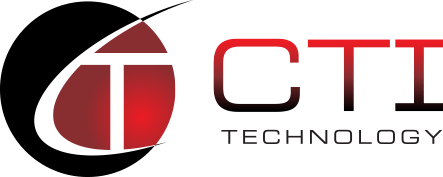Information Technology Planning for 2023: Developing Strategies for Growth
Key Points
- Information technology (IT) planning is a process that helps organizations to identify potential security vulnerabilities, reduce the risk of threats, and ensure that their IT systems and resources are aligned with their business goals.
- Developing an IT plan for the future is essential for aligning technology with business goals and ensuring that the organization’s IT systems and resources can meet the changing needs of the business.
- Regular reviews of the IT plan and monitoring of industry trends and emerging technologies can help the organization stay competitive and agile by providing a clear direction for IT investments and initiatives and positioning the organization to take advantage of new opportunities.
As you implement your business strategy for 2023, it’s important to consider updating your technology strategic plans to align with the current situation. With the potential economic downturn and rising costs due to supply chain disruptions, many businesses closely examine every expense to ensure their funds are being used efficiently.
The business landscape has changed, and your technology plans should reflect the new reality, opportunities, and challenges. Regardless of the size of your business, allocating a portion of the budget for technology and cybersecurity is crucial, particularly as more businesses adopt a hybrid working model and strive to safeguard against evolving cyber threats.
Your organization’s information systems are vital in providing a competitive edge, increasing staff efficiency, and improving overall operations. To ensure your information systems align with your organizational goals, it’s important to have a comprehensive plan that considers current and future needs. This is where information technology planning comes in, as it is essential for the success of your organization.

Information Technology Planning: A Key to Success
An Information Technology (IT) plan is a document that outlines an organization’s goals and strategies for using technology to support and improve its operations. By identifying current and future IT needs and aligning them with business objectives, IT planning helps organizations to stay competitive, improve efficiency and productivity, and reduce costs. A well-structured IT plan guides an organization’s technology investments, enabling it to make the most of its resources and achieve its objectives.
The specifics of an IT plan will vary depending on the organization and its industry. Still, it will generally address hardware and software upgrades, data management, cybersecurity, and disaster recovery issues. An IT plan for 2023 should consider the ongoing shift to remote work and the need for secure and reliable access to company systems and data. Additionally, it should consider the increasing reliance on cloud computing and the need for a robust disaster recovery plan.
Other significant areas of focus may include:
- Artificial Intelligence (AI) adoption
- Machine Learning (ML) adoption
- Internet of Things (IoT) integration
- Data privacy
- IT budgeting and cost management
An IT plan should be regularly reviewed and updated to reflect the organization’s changing needs and keep pace with new technologies and industry trends.
The Importance of Information Technology Plans for 2023 and Beyond
By now, you have likely started implementing your 2023 business strategy, but what about your Information Technology (IT) plans? Not having a comprehensive IT plan can be detrimental to the success of any business in today’s digital world. We live in an era of rapid technological change, where IT plays a vital role in everything from office automation to online sales. Without a comprehensive IT plan, your business could quickly become obsolete.
Creating an effective IT plan involves assessing the current state of your business’ technology, identifying what needs to change, and developing a strategy for finding the best technology solutions. It should also consider future technological developments so you can stay one step ahead. To ensure your business remains competitive, it is essential to create an IT plan that outlines objectives and goals for the upcoming years.
Your IT plan will depend highly on your business’s size and nature. It should include a budget for technology purchases and upgrades, a timeline for implementation, and security protocols. It should also include a plan for training staff on new technologies and plans to ensure the highest levels of data security.
Below are some key components of a successful IT plan for 2023 and beyond:
- Analysis of current technology needs, capabilities, and infrastructure: This will include identifying any existing deficiencies in terms of hardware, software, networks, and data storage. It is essential to understand what your current technology can and cannot do to evaluate what needs upgrading and what new technologies should be introduced.
- Creation of an IT budget: This budget should include costs for hardware and software purchases, maintenance, and upgrades, as well as any other IT-related expenses. The budget should be realistic and allow for flexibility in case of unexpected needs.
- A timeline for implementation: This timeline should include a plan for installing and testing new hardware, software, and networks. It should also include a timeline for staff training and any necessary changes to existing processes and procedures.
- Security Protocols: This should include protecting data from internal and external threats. Protocols should be regularly updated to ensure your data remains secure.
- A modernization plan should include a strategy for keeping up with the latest technology trends. It should involve researching new technologies and evaluating their potential benefits for your business.
This approach is designed to provide you with the following:
- A comprehensive understanding of your IT needs
- An effective budget for technology purchases and upgrades
- A timeline for implementation and training
- Robust security protocols to protect data
- A plan for staying ahead of the curve with modern technology trends
Information Technology(IT) planning offers many advantages, including:
- Improved efficiency: Implementing the right IT solutions can help streamline processes, reduce overhead costs, and improve customer service.
- Enhanced security: IT plans should include protocols that protect your data from internal and external threats.
- Increased competitiveness: Staying ahead of the curve with modern technology could give you a competitive edge.
- Improved customer satisfaction: Implementing IT solutions that improve customer service and streamline processes could improve customer satisfaction.
In 2023, IT planning is necessary for the smooth functioning of businesses and to stay safe and secure from cyber threats. Cybersecurity and data privacy has become critical for businesses of all sizes and industries.
Assessing Technology Needs and Developing an Implementation Plan
Assessing your organization’s technology needs and developing an implementation plan is a critical step in the process of Information Technology(IT) planning. It involves identifying areas where the organization’s current technology falls short and determining what new technology or updates need to be implemented to support its goals.
This process includes the following steps:
- Conducting a technology audit to identify gaps in current systems and infrastructure
- Identifying areas where new technology can improve business processes and increase efficiency
- Assessing the organization’s long-term technology needs and goals
- Developing an implementation plan that outlines the steps and resources needed to implement new technology and updates
- Regularly reviewing and updating the implementation plan to ensure it stays aligned with the organization’s goals and stays current with technology advancements
Conducting a technology audit and identifying the gaps in the current technology infrastructure is crucial to successful IT planning. This step will help your organization understand what areas need improvement and where new technology can be implemented to support your organization’s goals. By identifying the areas of the business that need improvement, your organization can develop a strategy to implement the appropriate technology and regularly review and update it to ensure it stays aligned with your goals.
It’s important to note that the implementation plan should also consider the organization’s budget, resources, and timeline. This step will help the organization to understand the cost and effort required to implement new technology and updates and ensure that it has the necessary resources to execute the plan.
Uncovering Potential Security Vulnerabilities and Taking Steps to Reduce the Risk of Threats
Information Technology planning should focus on uncovering potential security vulnerabilities and taking steps to reduce the risk of threats.
This may include activities such as:
- Conducting regular security assessments and penetration testing to identify vulnerabilities in networks, systems, and applications
- Implementing security controls, such as firewalls, intrusion detection and prevention systems, and encryption to protect sensitive data
- Developing incident response and disaster recovery plans to ensure that the organization can quickly and effectively respond to security incidents
- Providing security awareness training to employees to help them identify and avoid potential threats
- Regularly monitoring for security threats and vulnerabilities and implementing updates and patches as needed to address them
- Reviewing and updating security policies and procedures to ensure they are current and effective
Assess the Impact of IT on Your Organization
It’s important to assess the impact of Information Technology in your organization. This includes understanding how IT impacts customer service, employee productivity, data management, cost savings, and other areas. Doing so will help you understand how IT can add value to your organization and what areas need improvement.
To assess the impact of IT in an organization, the following steps can be taken:
- Identify the critical business processes that are supported by IT systems, such as finance, operations, marketing, and human resources
- Evaluate the performance of these IT systems in terms of their availability, reliability, scalability, and security
- Identify any IT-related bottlenecks or challenges that are impacting the organization’s ability to achieve its goals
- Assess the organization’s IT infrastructure and determine whether it is adequate to support the current and future business needs
- Identify any IT-related risks, such as data breaches, system failures, or regulatory compliance issues, and determine the steps needed to mitigate them
- Measure the level of employee satisfaction with the IT systems and services provided by the organization
- Evaluate the organization’s IT governance, management, and alignment with the overall business strategy
- Gather feedback from key stakeholders, including employees, customers, and partners, to understand their perspective on the impact of IT on the organization
By assessing the impact of IT on your organization, you can make informed decisions when developing your IT plan and implementation strategy. This will help ensure that the technology you’re implementing aligns with your organization’s goals and will provide a positive return on investment.
Developing an IT Plan for the Future
An effective Information Technology plan is essential for businesses to remain competitive in today’s digital landscape. It should include a short- and long-term strategy, incorporating technology to help organizations reach their goals. To ensure success, IT planning should include steps for uncovering potential security vulnerabilities, assessing the impact of IT on the organization, and gathering feedback from stakeholders. Businesses can create an IT plan to help their organization succeed by taking these steps.
Why Is CTI Technology The Best Choice For IT Services In The Chicagoland Region?






















